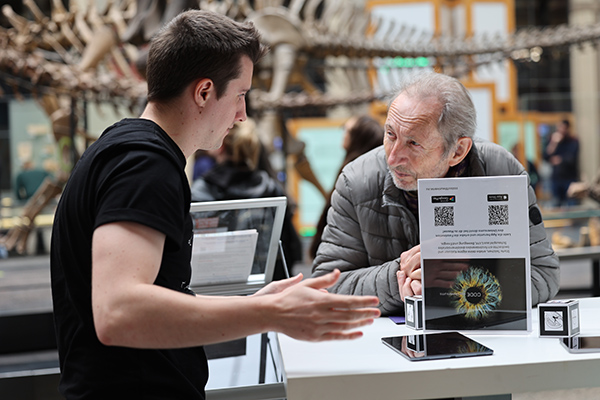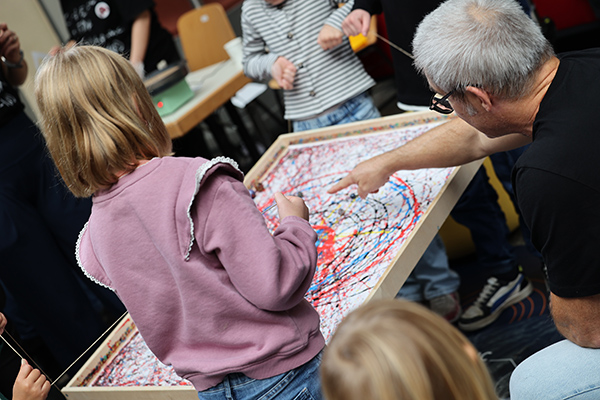
What may come after the Large Hadron Collider (LHC)? This question, and many others about the future of accelerator physics, were explored by scientists from CERN, the QUASAR group, and others, with visitors at Berlin Science Week 2025 on 1st and 2nd of November.
As one of Europe’s leading science festivals, Berlin Science Week is an annual science and culture festival. This year the theme was Beyond Now, held between the 1st and 10th of November. The festival showcased cutting-edge research to the public, inviting them to explore the insights and innovations that science contributes to the world.

QUASAR Monty King talking to a visitor.
Visitors to the CERN/Liverpool booth were invited to discuss the intricacies of accelerator physics, and the possible plans of the Future Circular Collider (FCC) - a next-generation particle collider that could open new pathways in our understanding of the universe.
A highlight of the weekend was the display of the new augmented reality (AR) Code of the Universe app, co-developed by University of Liverpool researchers, helping the public understand how fundamental research can lead to real-world innovations, from medical technologies to digital infrastructure. Across 5 interactive levels, the app illustrates how particle accelerators like the FCC operate, what kinds of data can be extracted from them, and how information helps scientists attempt to understand the origins of the universe.

Children creating vibrant paint trails.
As the future of science lies with the next generation, the team aimed to inspire young visitors to explore and ask questions about scientific discovery. Throughout the weekend, budding scientists-to-be took part in activities such as particle twister, drawing and designing their own particle collision diagrams, and tracing the paths of particle collisions through vibrant paint trails.
Additionally, visitors explored the use of artificial intelligence (AI) in disease diagnosis through the interactive AI & Eyes game made by LIV.INNO and UK unplugged earlier this year. The game invited players to question the accuracy of AI in predicting outcomes and discuss possible measures to be taken to improve AI’s reliability and usability in future accelerator physics projects.

The team aimed to inspire young visitors to explore and ask questions about scientific discovery
Professor Carsten P Welsch, Head of the QUASAR Group and Director of LIV.INNO, reflected on the event by saying: “It was really great to have such a diverse and engaged audience to talk about the challenges related to the future of particle physics and accelerator science. The event was also an excellent opportunity to use our new Code of the Universe app for visitor engagement.”